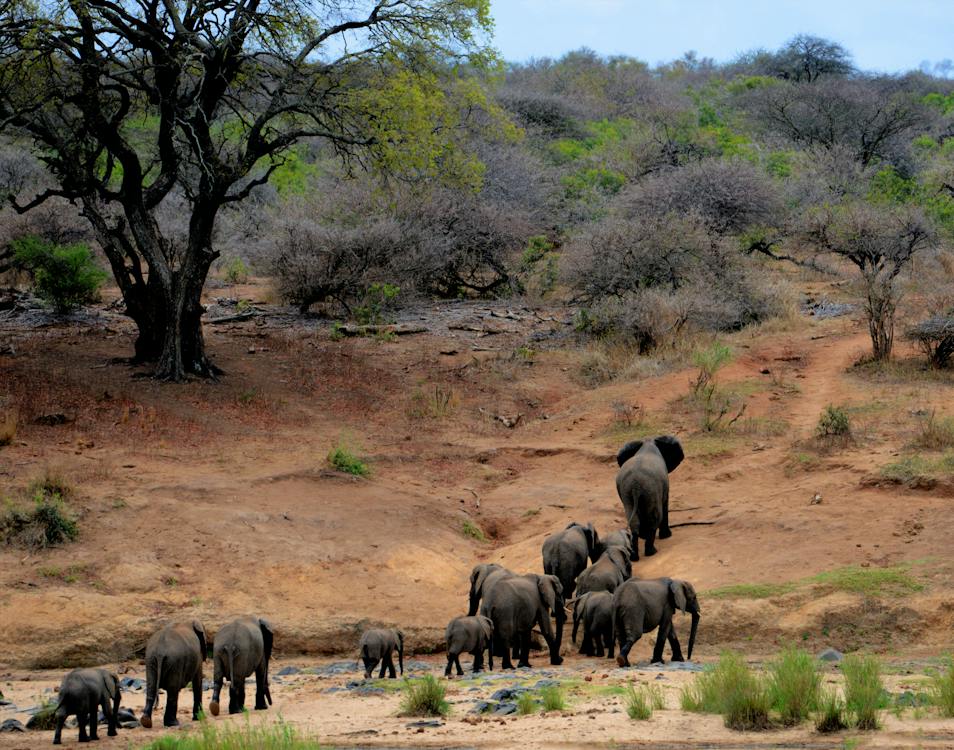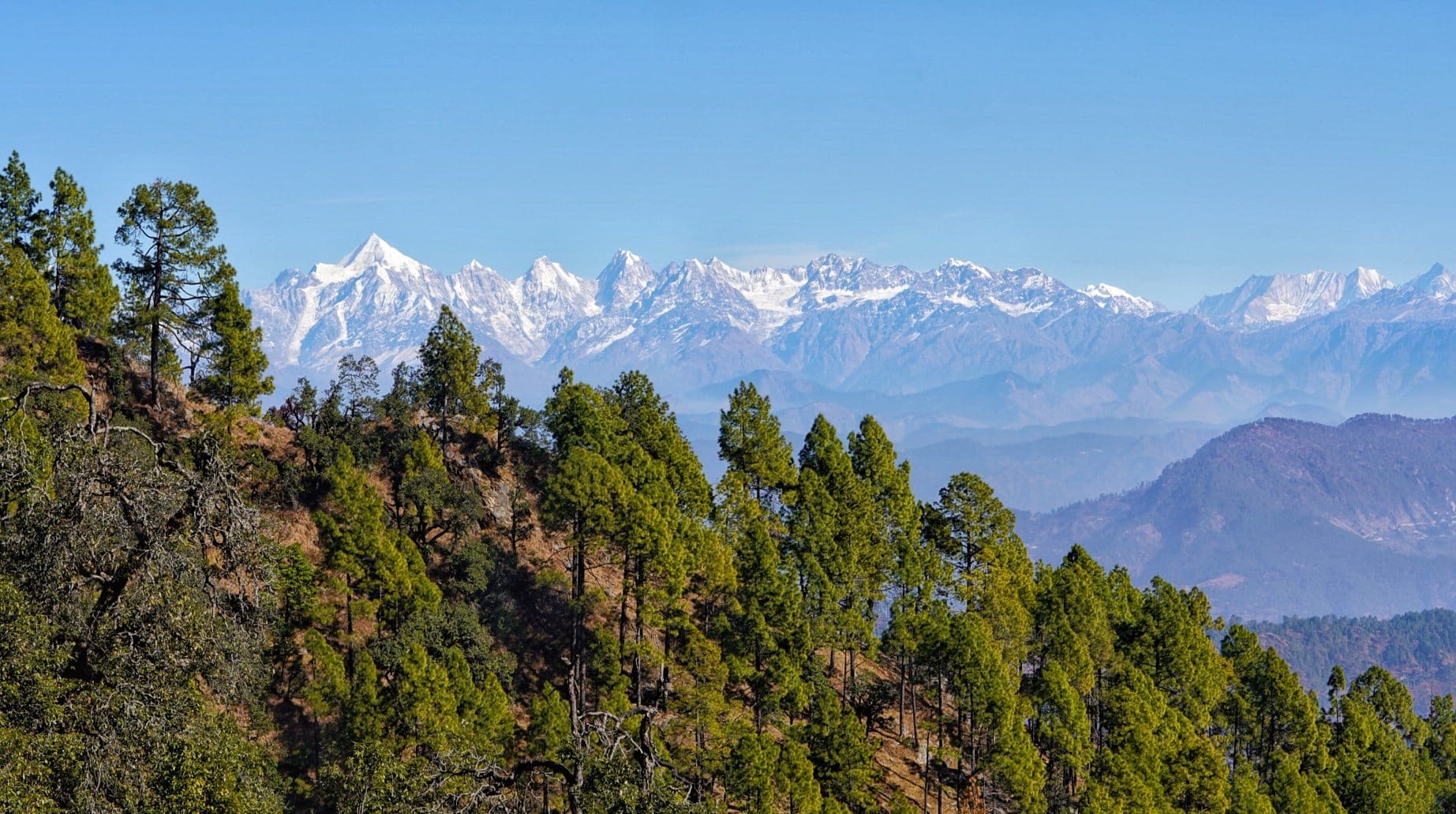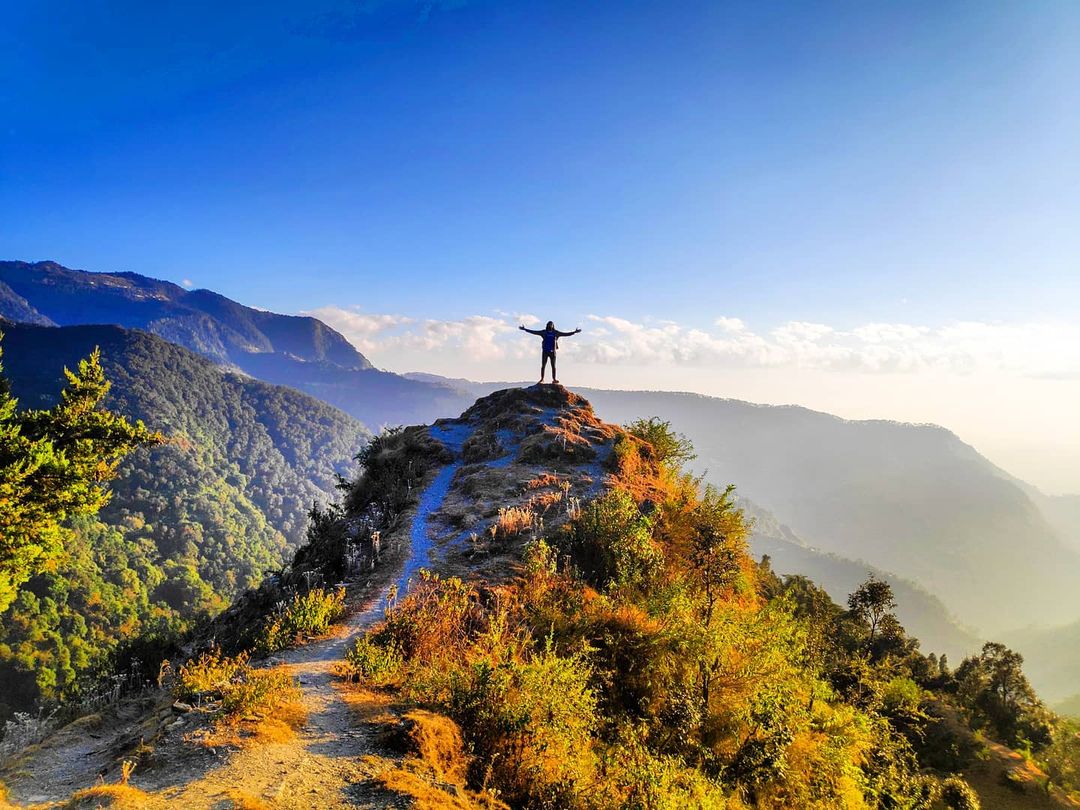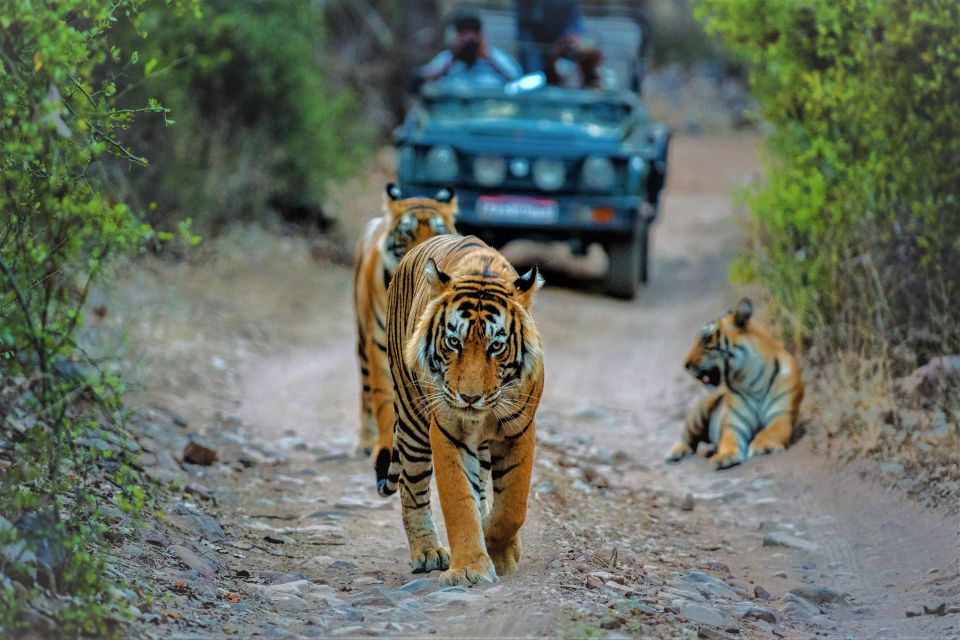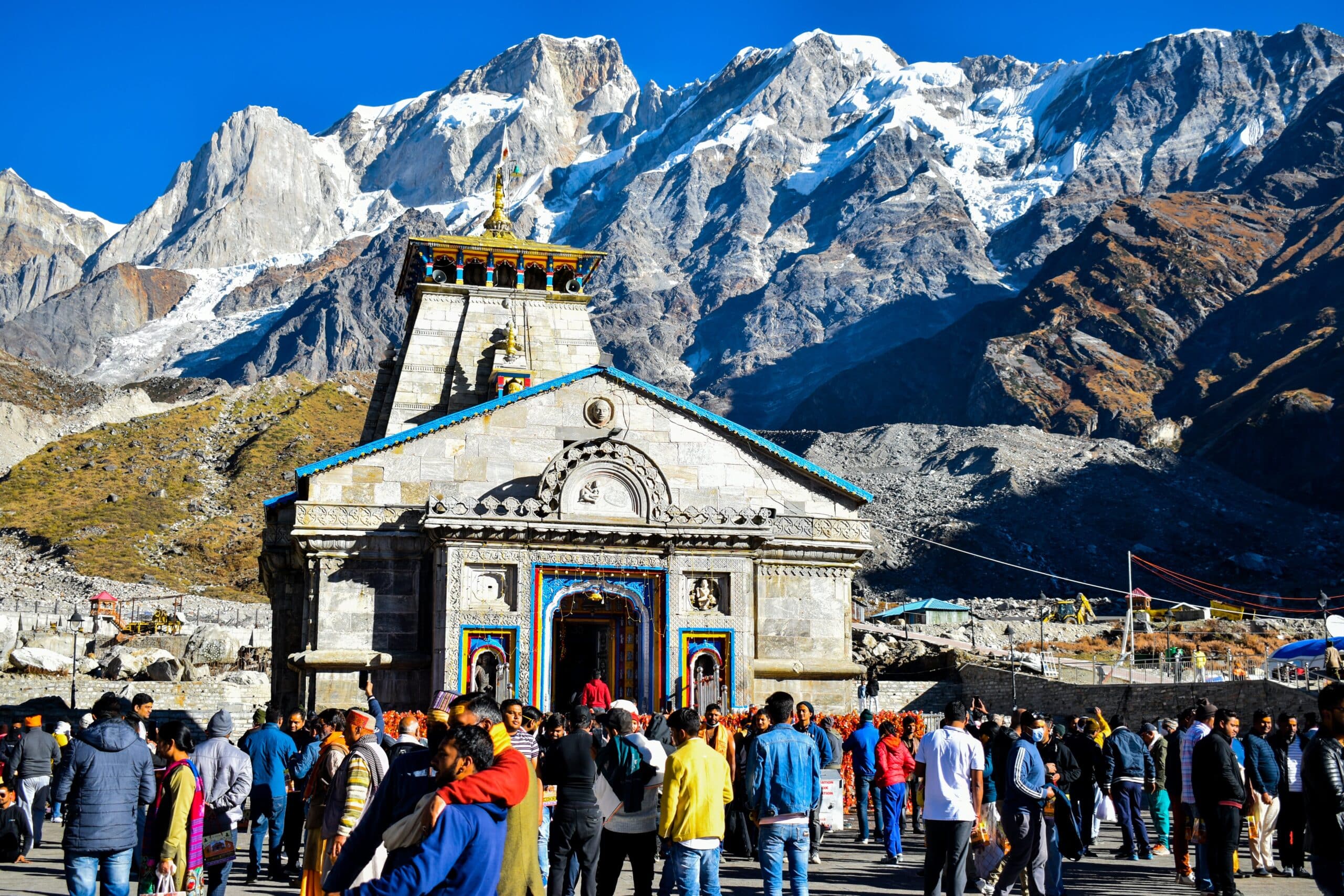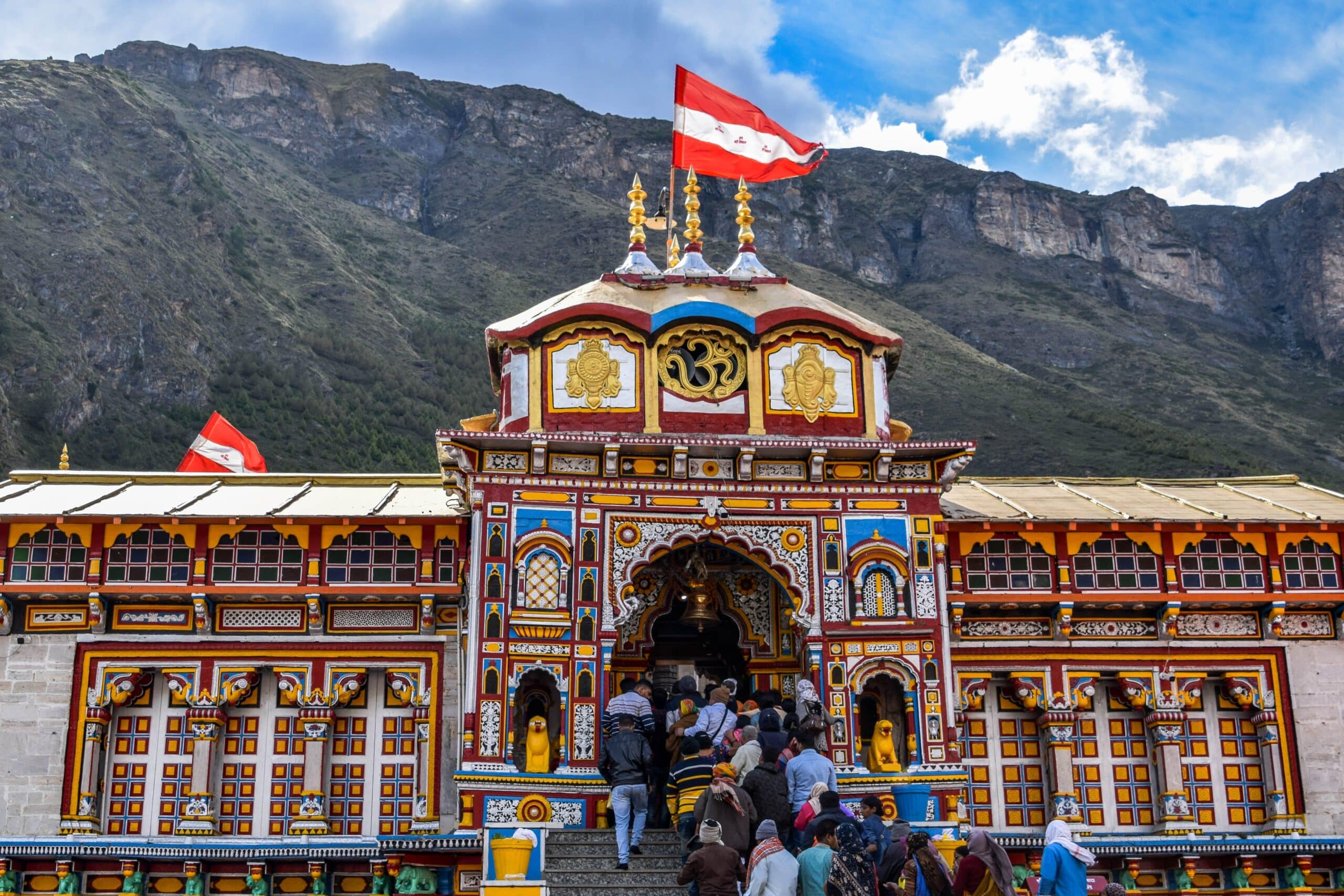- Transport Included
- Meals Included
- Hotel Included
- Pickup/ Drop Point: Delhi/Delhi
Corbett with Amazing Nainital & Ranikhet

Nestled in Uttarakhand’s Nainital district, Jim Corbett National Park is India’s oldest reserve, established in 1936 as Hailey National Park and later renamed in 1987 to honor Jim Corbett. Spanning 521 square kilometers, it was the first national park in mainland Asia and is traversed by the Ramganga River. The park is a popular destination for wildlife enthusiasts and tourists. This trip offers scenic views of snow-capped mountains and boating opportunities on Naini Lake. Nainital is a picturesque destination with attractions like Dorothy’s Seat, Hanumangarhi Temple, Naina Devi Temple, Nainital Zoo, and Naina Peak. We also drive through Ranikhet, a charming mountain town established as a British military cantonment in 1869 by Master Mayo. it retains its tranquil beauty and historical charm, offering visitors a glimpse into its rich heritage amidst stunning natural surroundings.
What to Experience:-
The Jungle Jeep Safari: Experience the excitement of wildlife safaris as you journey through a range of contrasting environments within the park, including lush forests, open grasslands, and habitats along the rivers. Observing magnificent creatures like tigers, elephants, leopards, deer, and a diverse array of bird species is one of the most memorable aspects of visiting Corbett.
The Buffer Zone Nature Walk: Explore the natural beauty of Corbett National Park on a leisurely walk or guided nature trail in the buffer zone, where you can discover the diverse flora and fauna up close. Accompanying naturalists will share their knowledge of the park’s rich biodiversity, and you’ll have the opportunity to witness the intricate ecosystems that support the park’s wildlife.
Best Bird Watching: Corbett provides a sanctuary for individuals interested in birdwatching, as there have been documented sightings of more 600 different bird species in the area. Take advantage of serene mornings or evenings to witness the vibrant feathered creatures in their native environments, ranging from the hard-to-find Himalayan pied kingfisher to the impressive crested serpent eagle.
The Beautiful Pahadi Culture and Tradition: Immerse yourself in the vibrant cultures of the nearby villages and engage with the local populations to gain a deeper understanding of their lifestyles, beliefs, and practices. Partake in enriching experiences like village tours, traditional art performances, and handicraft purchasing.
Capturing the life moments: Photographers, get ready to capture the splendor of the park’s varied landscapes, featuring dense forests, gushing waterfalls, and expansive views of the Himalayan mountains. The constantly shifting light conditions provide a wealth of opportunities for taking breathtaking photos.
Discover the tranquil allure of Nainital, a delightful mountainous retreat situated around the breathtaking Naini Lake. Delight in leisurely boat rides on the calm waters venture into lively markets, savor the awe-inspiring vistas from Snow View and Tiffin Top viewpoints, and surrender to the peace and serenity of the natural surroundings by embarking on scenic strolls through the adjacent hills.
Charming Ranikhet: Nestled in the Himalayas, Ranikhet is a picturesque hill town that offers a tranquil escape from the hustle and bustle of city life. With its dense green forests, charming colonial architecture, and breathtaking views of the majestic Himalayas, Ranikhet is a haven for nature lovers and those seeking a peaceful retreat. The town’s ancient temples and churches are steeped in history and culture, while the lush pine forests and orchards provide the perfect setting for leisurely walks and picnics. Visitors can also enjoy a game of golf at the scenic Golf Course, or simply soak in the serene atmosphere of this quaint Himalayan town.
Day Wise Detailed Itinerary
Day 01: Delhi-Corbett National Park by surface 245 Kms approx 5-6 Hrs
Today we start early from Delhi and commence on our Wilderness Trip to Corbett National Park, enjoy breakfast on the way (on direct pay), and by afternoon arrive at destination, and check into the booked accommodation, The Rest of the time at leisure free for your activities with the resort.
Corbett National Park: Spread across 500 square kilometers in the Nainital district of Uttarakhand, Jim Corbett National Park is a prized possession of India’s natural heritage. Established in 1936, it holds the distinction of being the country’s oldest national park, and its namesake, Jim Corbett was a celebrated hunter-turned-conservationist. The park’s diverse landscape, which includes rolling hills, sprawling grasslands, and dense forests, supports an astonishing array of flora and fauna. Visitors to the park can look forward to a memorable experience, with its many highlights and attractions, including the chance to spot rare and endangered species, explore picturesque scenery, and enjoy a variety of outdoor activities.
Overnights stay at the Resort Meals: Dinner Only
Day 02: In Corbett National Park
Today start the day by immersing yourself in nature with a 3-hour early morning ride in a Gypsy. This is your chance to marvel at the beauty of the great outdoors and experience the thrill of a wildlife safari, offering a chance to observe a diverse range of animals in their natural habitat. The park is home to several species, including the majestic Bengal tiger, the mighty Asian elephant, the elusive leopard, the sloth bear, various deer species, and a plethora of bird species. After the Safari experience return to your resort for breakfast, and later, head out to explore local attractions like the Garjiya Devi Temple, Kosi River, and Dhangari Museum. After a fulfilling day, return to your resort, and evening at leisure.
Overnights stay at the Resort Meal Breakfast and Dinner Only
Day 03: Corbett – Ranikhet by surface 80 Kms approx 3-4 Hrs
After a leisurely breakfast at your accommodation in Corbett National Park, we will begin our journey through the picturesque Kumaon hills, ultimately arriving in Ranikhet, a charming cantonment town steeped in history. Once the favored getaway of Padmini, the queen of King Sudhardev of the Katyuri dynasty (1180 AD), Ranikhet boasts a fascinating past. Following lunch, you’ll have the opportunity to visit Jhula Devi Temple is an age-old place of worship devoted to Goddess Durga and is renowned for its abundance of bells and the custom of attaching bells by followers, thought to grant their desires. Amidst the picturesque town of Ranikhet, Chaubatia Garden offers a serene escape, boasting orchards and spectacular vistas of the majestic Himalayas. Take a leisurely walk amidst the vibrant greenery and bask in the natural beauty of this charming destination. In the evening, we will also visit Majhkhal picturesque hamlet nestled near Ranikhet, offering awe-inspiring vistas of the Himalayan range and neighboring valleys, ideal for those who cherish nature and photography. Rest of the evening at leisure.
Overnights stay at the Hotel Meal Breakfast and Dinner Only
Day 04: Ranikhet – Nainital by surface 60 Kms approx 2-3 Hrs
Wake up to the beautiful mountain morning, enjoy the delicious breakfast, and thereafter we will proceed our drive towards Nainital, you’ll be greeted by breathtaking vistas of the Himalayan mountains. The journey presents glimpses of verdant forests, terraced fields, and quaint villages that are characteristic of the Kumaon region. As you near Nainital, the scenic Naini Lake, encompassed by hills, comes into view, serving as the focal point of the town. Stroll around the local Nainital Market followed by boating in the famous Nainital lake (on direct payment).
Overnights stay at the Hotel Meal Breakfast and Dinner Only
Day 05: Nainital to Delhi by surface 320 Kms approx 7-8 Hrs
Enjoy leisurely breakfast at the hotel and thereafter by afternoon checkout and proceed to Delhi by driver.
No Accommodation Meals: Breakfast Only
Expert Guidance
Be Prepared: Conduct thorough research about the park prior to your trip. Familiarize yourself with the optimal visiting time, the types of accommodations offered, entry protocols, and safari alternatives. It’s advisable to book accommodations and safaris ahead of time, particularly during busy periods.
Be Responsible towards Wildlife: Always show respect for wildlife by keeping in mind that you are a visitor in their natural habitat. It is important to keep a safe distance from the animals and avoid any actions that may provoke or disturb them. Additionally, it is crucial to adhere to the guidance of your tour guide throughout your entire visit.
Respect Park Rules and Regulations: Make sure to adhere to the rules of the park by becoming familiar with them. These rules and regulations may cover various aspects such as noise, speed, littering, and how to interact with wildlife. Respecting and following these rules is essential for safeguarding the ecosystem and guaranteeing a secure and enjoyable experience for all visitors.
Pack Light & Useful: Make sure to bring the right attire and equipment for the weather and activities you plan to enjoy. Don’t forget to pack comfortable shoes for walking, protection from the sun and insects, binoculars for wildlife viewing, a hat, a refillable water bottle, and a camera with zoom lenses for capturing memories.
Stay Hydrated: Make sure to stay properly hydrated and nourished by bringing enough water and snacks with you, especially if you’re going to be outside for a long time.
Be Kind & Respectful: Show Consideration for Local Residents: When visiting a national park, it’s essential to remember the nearby communities that call it home. Be mindful of their cultural practices, traditions, and personal space. If you wish to capture their likeness in a photograph, always ask for their consent first.
Engage in Responsible Tourism: Reduce your ecological footprint by refraining from engaging in activities that cause harm to the natural environment. Stick to marked paths, refrain from plucking vegetation or disrupting habitats, and avoid making excessive noise.
Put safety as your top priority: Make sure to prioritize your own safety as well as the safety of others while you are visiting. It is important to adhere to all safety instructions given by park personnel and guides. Exercise caution when near bodies of water, cliffs, and areas with steep slopes.
Expand Your Knowledge: Seize the chance to discover the diverse plant and animal life, as well as the conservation initiatives, within Jim Corbett National Park. Interact with experienced guides and park officials to gain a deeper understanding of the park’s rich biodiversity and the challenges faced in preserving it.
Best Time to Visit
Winter: October to February brings a cool and enjoyable climate, making it a prime season for observing wildlife. The likelihood of encountering animals, including majestic tigers, increases as they venture out to soak up the sun’s warmth during the day. Although, it’s wise to pack warm attire for the brisk early mornings and evenings.
Spring: (March to May) ushers in a renewed vitality, with temperatures gradually rising, making it an ideal time for bird enthusiasts to observe and appreciate the diverse avian species that inhabit the park. Additionally, the verdant greenery of the park is at its peak, creating a picturesque landscape that invites exploration. Although the sun’s intensity can be felt during the day, it’s crucial to prioritize hydration and protect one’s skin with sunscreen to ensure a comfortable and enjoyable experience.
Monsoon: During the monsoon season from (June to September), Corbett National Park receives significant rainfall, causing road closures and making some areas inaccessible. Despite these challenges, this period showcases vibrant greenery and revitalized rivers, providing a distinctive opportunity for nature enthusiasts. Spotting wildlife may be harder because of the thick vegetation.
Note: The ideal time to travel to Corbett varies depending on what you enjoy. If your main focus is seeing wildlife, it’s suggested to go during the winter months. However, if you prefer vibrant green scenery and are okay with some rain, visiting in the monsoon season can provide a distinct and interesting experience.
Why your Trip is Safe & Secure with us?
Professional & Experienced Team: Trekup India has professional and highly Experienced Yatra Experts to assist and guide you for better Yatra planning, our yatra experts possess extensive knowledge of the destination, local traditions, and potential hazards. With our expertise, you will enjoy a seamless and secure Yatra.
Trekup India Adventures Pvt. Ltd. is a reputable yatra operators, who prioritize safety by implementing well-defined protocols to minimize potential hazards during excursions. These measures may encompass routine safety briefings, emergency response plans, and thorough risk evaluations for various activities.
Certifications & Affiliations: Trekup India holds all valid licenses, certificates, and affiliations and is authorized by the Government to Uttarakhand to operate Yatras. We are registered with the Uttarakhand Tourism Board and are affiliated with the Indian Mountaineering Foundation (IMF) and Adventure Tour Operators Association of India (ATOAI), Trekup India compliance with all rules and guidelines established by governing bodies.
Certified Accommodation and Transport: Trekup India is a trusted and Reliable tour operator with huge collaboration with established accommodations to ensure comfortable stays and guaranteed reservations, we own a fleet of transportation to provide safe and hassle-free drives.
Seasoned, Experienced Chauffeurs: Trekup India provides experienced licensed drivers on Yatra with a minimum of 5 years of driving experience in Yatra.
24×7 Hour Support: Trekup India provides uninterrupted support to its travelers, giving them the peace of mind that they can reach out for help at any time, whether it’s an emergency or an unforeseen circumstance, day or night, throughout their journey.
What should you pack for this trip?
Clothing:
– Clothing that’s both lightweight and breathable is ideal for walking and hiking
– long-sleeved shirts & pants to protect your skin from the sun’s harmful rays and insect bites.
– For chilly evenings and high altitudes, pack warm clothing to keep you cozy.
– Rainwear, such as a poncho, waterproof jacket, and pants to keep you dry in case of inclement weather.
– A hat or cap will help shield your face and head from the sun
– Gloves and a scarf will keep your hands and neck warm in colder temperatures.
– Appropriate footwear that’s sturdy and comfortable for your walking or hiking journey.
– Sandals or flip-flops for use indoors and at campsites
Personal Belongings:
– identification (such as passport, Aadhar Card)
– Medications prescribed by a doctor and a simple first-aid kit
– Individual hygiene items (like toothbrush, toothpaste, soap, shampoo, etc.)
– Sun protection items like sunscreen and lip balm with SPF
– Bug repellent
– Personal care products for cleanliness (such as wet wipes, hand sanitizer, tissues, etc.)
– Corrective eyewear like glasses or contacts, if necessary
– Compact travel towel or small umbrella
Some Useful Tips
– Day Pack consider bringing a backpack or daypack to carry your essentials.
– Light Don’t forget a flashlight or headlamp with extra batteries.
– Water Bottle stay hydrated with a water bottle or hydration pack.
– Electronic Gadgets: Portable power bank, Camera, Smart Phones.
– Sunglass: Protect your eyes from the sun with sunglasses that offer UV protection.
– Binoculars for birdwatching or taking in scenic views.
– Cash it’s always a good idea to have some cash in hand in small denominations.
– Snack always be equipped with some snacks and energy bars to keep your energy up.
– Waterproof Bags to protect your electronics and documents from moisture, consider using waterproof bags or ziplock bags.
– A multi-tool or Swiss Army knife can come in handy for a variety of tasks
– A travel guidebook or map of the Yatra circuit can help you navigate the area.
– Don’t forget to bring a personal journal and pen, so you can record your thoughts and experiences along the way.
– Other miscellaneous items you may want to bring include…
Travelers should bring along physical or electronic versions of their travel schedule, lodging confirmations, and important emergency contact information. It is important to also have any permits or passes needed for specific locations along the Char Dham path. Additionally, travelers should take necessary precautions related to COVID-19.
Inclusion
– 02 Night accommodations in Corbett on a sharing basis using base category rooms.
– 01 Night accommodation in Nanital on a sharing basis using base category rooms
– 01 Night accommodation in Ranikhet on a sharing basis using base category rooms
– Meals on MAP basis (Breakfast and Dinner) at a booked Resort, on a fixed basis menu
– Transportation as per the itinerary Ex-Delhi
– 01 Jeep Safari in Corbett National Park
– Park Entry Fee and Permission
– Service of Naturalist during Jeep Safari
– All Fuel Expenses for the vehicle
– Driver daily allowance
– All Toll Tax, Road Tax and Parking Fees are included
Cost Exclusion
– GST of 5% will be additional on Invoice
– Any travel / Health insurance (Trekup India recommends you to take your insurance)
– Any additional meals such as Enroute Meals, Tea snacks, Lunch
– Any Airfare to/from Destination (Trekup India will be happy to book it with additional cost)
– Medical expenses, do carry your own personal medication
– Any personal services such as Laundry, phone calls, liquors, mineral water, etc.
– Any still / video camera fee
– Any Entrance fee Monuments, Monasteries, Museums, Temples – Pay directly on the spot
– Any Guide services – will be arranged by Trekup India on request at an additional cost.
– Any services that are not mentioned in the cost inclusion section
How To Reach Delhi?
By Air: Indira Gandhi International Airport (DEL) in Delhi is a bustling hub for air travel, providing convenient connections to numerous domestic and international destinations. You can easily book flights to Delhi directly from various cities worldwide.
By Train: Delhi is linked to the majority of India’s prominent cities through a comprehensive railway system. The city boasts multiple railway stations, with New Delhi Railway Station and Old Delhi Railway Station serving as the primary hubs. You can reserve train tickets online via the Indian Railways website or purchase them in person at a nearby railway reservation counter.
By Road: Delhi enjoys seamless connectivity with surrounding states and cities through a comprehensive network of national and state highways. Travelers can conveniently reach Delhi via bus, car, or taxi from nearby urban centers like Jaipur, Agra, Chandigarh, and so on. Numerous interstate bus services ply to and from Delhi, and passengers can book their tickets online or at nearby bus terminals.
By Metro: The Delhi Metro offers a convenient and effective way to travel around the city and also links different areas of the National Capital Region (NCR). If you are in nearby cities such as Noida, Gurgaon, or Ghaziabad, you can easily access Delhi using the metro system.
Reviews
FAQs
What makes Jim Corbet National Park famous?
Jim Corbet National Park is named after Jim Corbet who was India’s best-known hunter. He became famous when he tracked down and killed a number of man-eating tigers and leopards.
Which is the most visited zone of Jim Corbett National Park?
Jhirna Zone in Jim Corbett National Park is the most famous as it is on the southern edge and was added in 1994. It is the zone where most of the tiger sightings happened which makes it the most visited zones.
Which is the most famous tiger in Jim Corbett National Park?
The most famous tiger in Jim Corbett National Park is Champawat Tiger who died in 1907 and was shot by Jim Corbett himself, he has known to kill at least 436 people.
Are there snakes in Jim Corbett National Park?
. Yes, some of the very known once are four very large Indian Pythons which measured to a size of two and a half in length and a King Cobra which was two meter long.
When does Jim Corbett National Park close?
Jim Corbett National Park remains closed from 1st July to 15th October, during this time only five zones are closed out of seven and two zones are kept open throughout the year.

